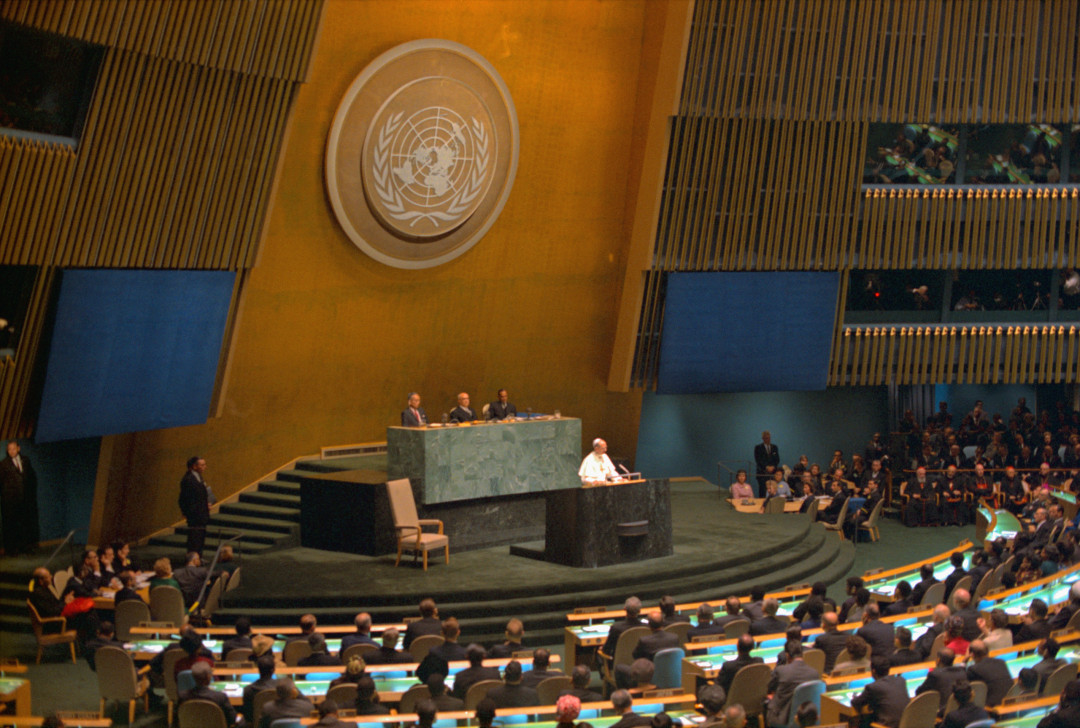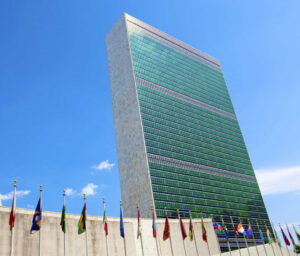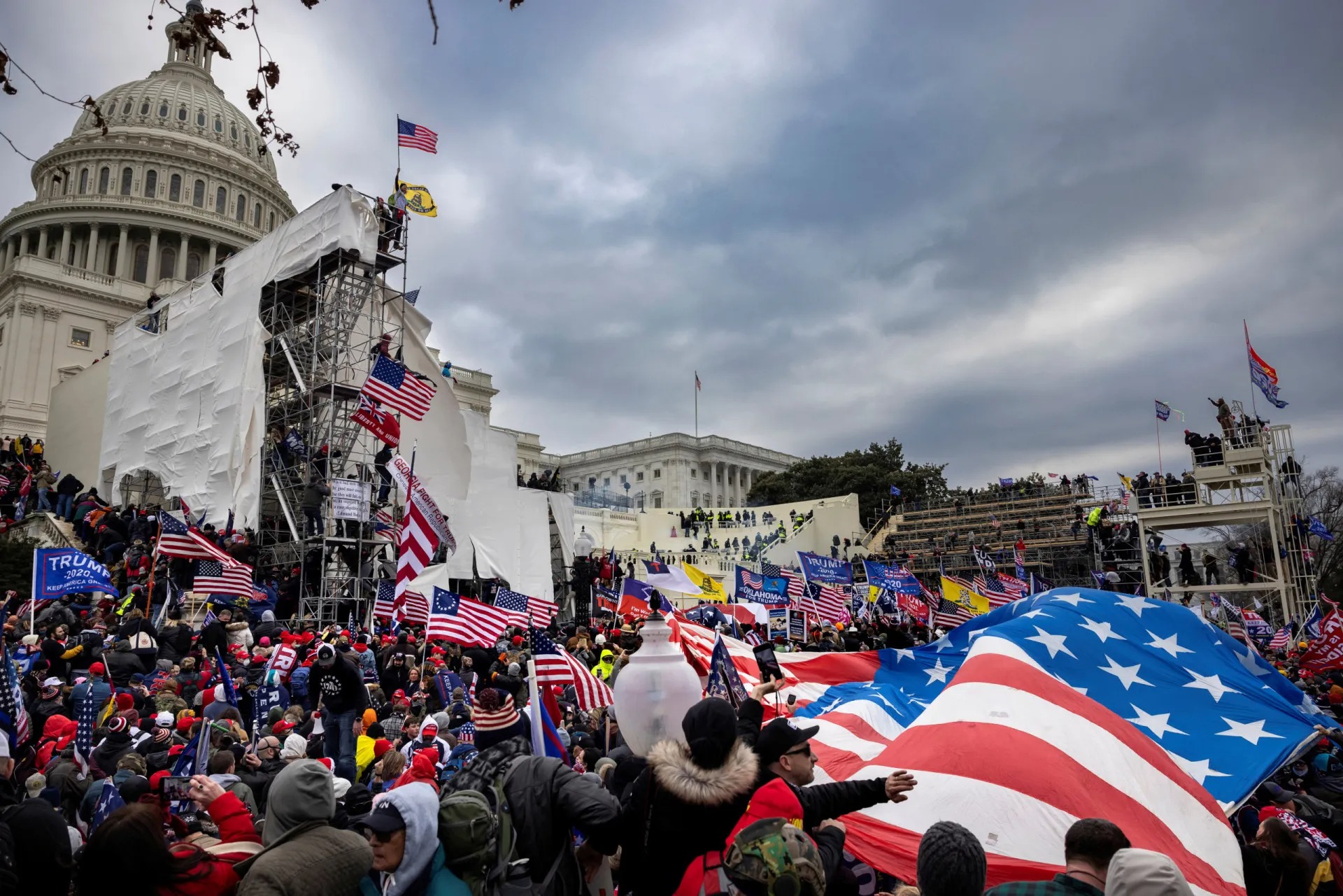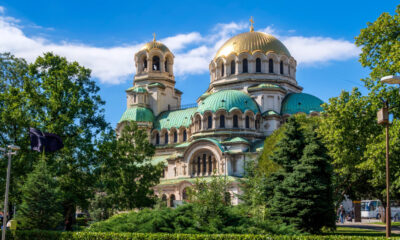News
From Peace to Progress: The United Nations Biggest Wins

Yet the UN’s journey has never been without challenges. As political landscapes shift and new crises emerge—from climate disasters and pandemics to armed conflicts—the organization continually adapts to fulfill its mandate. Despite these hurdles, its achievements over seven remarkable decades have reshaped our world.
Among its most profound successes are the eradication of smallpox, the establishment of universal human rights standards, and the deployment of peacekeeping forces that have saved countless lives. The UN has fed millions through famine relief, sheltered refugees fleeing war, and brokered ceasefires in volatile regions. Its environmental treaties have united nations against ecological threats, while its development goals have lifted communities from poverty.
While critics debate its limitations in an era of complex geopolitics, the UN’s enduring legacy lies in its ability to bring nations together—even amid disagreement—to address humanity’s greatest challenges. As we reflect on its 75-year history, one truth remains clear: in a world without the UN, our collective future would be far more uncertain.
UN headquarters

© Getty Images
The United Nations has its main home in New York City, but this isn’t just any regular office building – it sits on special international land that doesn’t belong to any single country. Think of it like neutral ground where all nations can meet as equals.
But the UN doesn’t just work from New York. It has other important bases around the world:
• Geneva, Switzerland – where lots of human rights and health work happens
• Nairobi, Kenya – the center for environmental programs
• Vienna, Austria – focusing on nuclear safety and crime prevention
• The Hague, Netherlands – known for international courts and justice
These locations weren’t chosen by accident. By having offices spread across different continents, the UN can stay connected to issues affecting people everywhere. It’s like having neighborhood offices for a global organization – making sure no part of the world is left out of important decisions.
The New York headquarters itself is pretty special. That tall glass building by the East River has become a symbol of international cooperation. You’ve probably seen it in movies – where diplomats from all over the world walk through those famous corridors, working (and sometimes arguing) to solve global problems.
What’s interesting is that while these buildings are on international soil, they’re still part of the cities around them. The UN brings together world leaders, but it also employs local staff and contributes to each host city’s economy and culture. It’s this mix of global mission and local connection that makes these headquarters so unique.
The UN Charter: Humanity’s Fresh Start After WWII
Born from WWII’s ashes, the UN Charter was signed on June 26, 1945, by 50 nations desperate to prevent future wars. When it took effect on October 24 that year (now UN Day), it launched a radical idea: countries solving conflicts through dialogue, not destruction.
This 193-nation pact does what no empire or treaty ever achieved:
• Bans war as a political tool
• Guarantees universal human rights
• Creates the first permanent peacekeeping system
• Makes development a global responsibility
More than just rules, the Charter represents humanity’s closest thing to a shared constitution – proof that even after history’s deadliest war, the world chose hope over hatred. Its principles still guide every UN mission today, from feeding the hungry to preventing nuclear war.

© Shutterstock
How the UN Works: The World’s Meeting Room
Think of the United Nations as the world’s biggest team, with six key players working together:
- The General Assembly– The world’s town hall where all 193 member countries debate issues (that’s the famous hall you always see on TV).
- The Security Council– The emergency responders with 15 members (including 5 permanent ones) who tackle wars and threats to peace.
- The Economic and Social Council– The problem-solvers focusing on poverty, health, and education worldwide.
- The Trusteeship Council– The successful peacekeeper that helped colonies gain independence (now mostly inactive since its job is done).
- The International Court of Justice– The world’s courtroom in The Hague that settles legal fights between countries.
- The UN Secretariat– The behind-the-scenes crew led by the Secretary-General that keeps everything running day-to-day.
Like a global machine, these parts work together to turn debates into action – whether sending peacekeepers to war zones or coordinating pandemic responses. The General Assembly Hall (pictured) is where this complex system becomes visible, as leaders from every corner of the planet take that iconic podium to speak for their people.
The UN’s Specialized Teams: Solving Global Challenges
Beyond its main bodies, the UN has specialized agencies tackling humanity’s biggest problems—like expert task forces for the planet. You’ve probably heard of these real-world heroes:
- WHO (World Health Organization)– The world’s doctor, fighting pandemics and keeping everyone healthy (that’s their blue-and-white flag pictured).
- UNESCO– The global teacher protecting education, famous sites like the Pyramids, and world cultures.
- UNICEF– The children’s champion ensuring kids survive and thrive, especially in crises.
- World Food Programme– The hunger fighter delivering meals in war zones and disasters (Nobel Peace Prize winner in 2020).
- World Bank– The finance expert helping countries reduce poverty.
These aren’t just “UN branches”—they’re independent organizations that work like specialized doctors in a hospital: The WHO handles health emergencies while UNESCO preserves ancient treasures, all under the UN’s big tent. Their work touches billions of lives daily, whether vaccinating children (UNICEF) or saving languages from extinction (UNESCO).
The WHO flag represents this network’s quiet power—no borders, just one mission: making life better for everyone, everywhere.
Nobel-Winning Peacemakers: UN Leaders Who Made History
The UN’s impact shines brightest through its Nobel Peace Prize winners – real-life peace heroes who turned diplomacy into action:
Dag Hammarskjöld (1961)
The daring UN Secretary-General who died in a mysterious plane crash while negotiating peace in Africa. The only Nobel awarded posthumously.
Kofi Annan (2001)
The charismatic leader (pictured) who reinvented the UN for the 21st century and championed human rights worldwide.
Lester B. Pearson (1957)
The Canadian diplomat who invented modern peacekeeping during the Suez Crisis – sending neutral UN troops to war zones for the first time.
Other UN Nobel Moments:
• UNICEF (1965) – For protecting children in war-torn nations
• UN Peacekeepers (1988) – The “Blue Helmets” who risk their lives
• WHO (2020) – For battling COVID-19 globally
These awards prove the UN isn’t just about meetings – it’s about leaders and programs that actually stop wars and save lives. From Hammarskjöld’s courage to Annan’s warmth, they remind us that peace takes both bold ideas and human compassion.
UN Messengers of Peace: Celebrities with a Cause
The UN doesn’t just rely on diplomats – it recruits famous changemakers as “Messengers of Peace” to spotlight global issues. These superstar advocates include:
Leonardo DiCaprio – Climate warrior
Malala Yousafzai – Education champion
Charlize Theron – HIV/AIDS activist
Paulo Coelho – Humanitarian storyteller
These aren’t just honorary titles. Each messenger:
• Uses their fame to amplify UN causes
• Travels to crisis zones most ignore
• Turns red carpet moments into activism
When DiCaprio speaks at the UN about climate change or Malala demands girls’ education, they’re doing more than raising awareness – they’re making global issues impossible to ignore. It’s smart diplomacy: meeting people where they already pay attention (movie screens, sports arenas, bestseller lists).
From Jane Goodall protecting wildlife to Yo-Yo Ma bridging cultures through music, these messengers prove change needs both policy and star power.
The Birth Certificate of Human Rights: December 10, 1948
In a war-scarred world still healing from WWII’s horrors, the UN did something revolutionary – it gave humanity its first universal rulebook for basic dignity. On December 10, 1948 (now Human Rights Day), delegates at Paris’ Palais de Chaillot (pictured) adopted the Universal Declaration of Human Rights – not as a law, but as a moral compass for all nations.
This 30-article document declared for the first time in history that:
• Every person is born free and equal
• Slavery and torture are always wrong
• People can believe, speak, and love freely
• Work, education, and healthcare are rights, not privileges
What makes it extraordinary? Eleanor Roosevelt and drafters from across the world created principles so fundamental that today, all 193 UN members accept them – even when they disagree. It’s inspired constitutions in over 90 countries and remains the foundation for every modern human rights law.
That Paris winter day didn’t just produce paperwork – it planted the flag for human dignity that still guides global justice today.
UN Women: The Global Force for Gender Equality
Every March 8th, when the world turns orange for International Women’s Day, UN Women is the powerhouse making it happen. But this agency does far more than coordinate celebrations—it’s the UN’s boldest advocate for gender justice year-round.
Created in 2010, UN Women tackles the toughest battles:
• Ending workplace discrimination
• Stopping gender-based violence
• Getting women into leadership roles
• Protecting girls’ education worldwide
Their work transforms lives—from training female peacekeepers in conflict zones to helping countries rewrite sexist laws. When women march for equal pay or survivors speak out against abuse, UN Women amplifies their voices at the highest levels.
The annual International Women’s Day campaign—with its iconic orange theme—showcases both progress and the long road ahead. It’s not just about one day of awareness, but 365 days of action to build a world where every woman and girl can thrive.
The World’s Greatest Treasures: UNESCO’s Heritage Mission
Imagine a global treasure chest protecting humanity’s most precious places—that’s UNESCO’s World Heritage program. As of 2020, this carefully curated list safeguards 1,121 irreplaceable sites across 167 nations:
- 896 cultural jewels– From the Pyramids to Machu Picchu
• 213 natural wonders – Like the Great Barrier Reef and Serengeti
• 39 mixed marvels – Where culture and nature intertwine
These aren’t just tourist spots—they’re our collective inheritance. UNESCO’s blue-and-white emblem signals that a site belongs to all humanity, whether it’s:
- A 2,000-year-old temple
- A vanishing rainforest
- An entire city like Venice fighting rising seas
The list keeps growing as new wonders are discovered and protected. But it’s also a rescue mission—53 sites are currently “in danger,” from war-torn ancient cities to climate-threatened islands.
This living archive proves that borders can’t divide what makes us human—our shared history, creativity, and natural world.
The Kyoto Protocol: A First Step Against Climate Change
In 1997, world leaders met in Kyoto, Japan to address the growing threat of climate change. The agreement they created, called the Kyoto Protocol, was the first major international treaty to set binding targets for reducing greenhouse gas emissions.
Key facts about the Kyoto Protocol:
- Took effect in 2005 after enough countries approved it
- Required 14 industrialized nations and the European Union to cut emissions
- Set different targets for different countries
- Created systems for countries to trade emission credits
The challenges:
Three major polluters – the United States, China and India – never fully joined the agreement. This limited the Protocol’s impact, but it established important foundations for future climate deals like the Paris Agreement.
The photo shows a protester’s creative 10th anniversary “birthday card” – a reminder that while the Kyoto Protocol wasn’t perfect, it marked the beginning of global climate action.
A Turning Point in the Fight Against AIDS (2001)
In 2001, the UN took a crucial step against one of history’s worst health crises. Seeing how HIV/AIDS was devastating families worldwide, world leaders signed a special promise – the Declaration of Commitment on HIV/AIDS.
Why this mattered:
• First time all countries agreed AIDS was a global emergency
• Set clear targets for prevention, treatment, and care
• Paved the way for better funding and research
This declaration created UNAIDS – now the world’s leading organization:
- Coordinates international efforts
- Helps millions get life-saving medicines
- Fights stigma and discrimination
While the battle continues, this 2001 decision marked when the world finally started working together against AIDS. Today, what began as crisis response has saved over 20 million lives.
Sources: (The Guardian) (WFP) (UN/WHO)
Read more: 10 celebrities who returned their industry awards

Lifestyle
The American Dream: A Living Ideal or a Fading Illusion?

Why the American Dream Still Matters
The American Dream has long symbolized the belief that anyone, regardless of background, can achieve success through hard work and determination. This ideal continues to inspire individuals worldwide, serving as a beacon of hope and possibility.
The Origins of the American Dream
The term “American Dream” was popularized by historian James Truslow Adams in his 1931 book The Epic of America. Adams described it as “that dream of a land in which life should be better and richer and fuller for everyone.” This vision was rooted in the nation’s founding principles, emphasizing equality, liberty, and the pursuit of happiness.
Over time, the American Dream evolved to encompass the idea that anyone could achieve upward mobility and prosperity through hard work, regardless of their social class or circumstances.

© Getty Images
How the American Dream Has Evolved
While the core tenets of the American Dream remain, its interpretation has shifted over the decades:
-
Post-WWII Era: Emphasis on homeownership, stable employment, and nuclear family life.
-
1960s-70s: Civil rights movements expanded the dream to include social justice and equality.
-
1980s-90s: Material success and consumerism became prominent markers of achievement.
-
21st Century: Focus on personal fulfillment, work-life balance, and redefining success beyond material wealth.
These shifts reflect broader societal changes, including economic fluctuations, cultural transformations, and evolving values.
Modern Interpretations: What It Means Today
Today’s American Dream is multifaceted, reflecting diverse aspirations and challenges:
1. Personal Fulfillment Over Material Success
Younger generations prioritize happiness, purpose, and autonomy over traditional markers like homeownership or wealth. A study by Close Up Foundation found that being happy and fulfilled tops the list of important elements of the American Dream for people aged 18 to 34.
2. Redefining Success
Success is increasingly viewed through the lens of personal growth, community impact, and meaningful work. This shift acknowledges that prosperity isn’t solely financial but also encompasses emotional and social well-being.
3. Inclusivity and Representation
There’s a growing recognition of systemic barriers that have historically limited access to the American Dream for marginalized communities. Efforts to address inequality and promote inclusivity are integral to modern interpretations of the dream.
Real Stories: The Dream in Action
Cristina Jiménez: From Undocumented to Advocate
Cristina Jiménez’s journey from an undocumented immigrant to a prominent activist exemplifies the evolving American Dream. Despite facing significant challenges, she co-founded United We Dream, the largest immigrant youth-led organization in the U.S., and played a pivotal role in the creation of the DACA program. Her memoir, Dreaming of Home, chronicles her transformation and advocacy efforts.
Brendan Abernathy: Singing a New Tune
Singer-songwriter Brendan Abernathy gained viral fame with his song “Married in a Year,” which addresses themes of insecurity and modern perceptions of the American Dream. His music critiques cultural pressures and the pursuit of success, offering a fresh perspective on contemporary aspirations. The Washington Post
Immigrant Narratives: Diverse Paths to Success
Stories from immigrants like Jonathan Mensah, Gainkumar Ramsaywack, and Alvaro Felix highlight the varied ways individuals pursue the American Dream. From professional sports to entrepreneurship, these narratives underscore the dream’s adaptability and enduring appeal.
Challenges to the Dream
Despite its enduring allure, the American Dream faces significant obstacles:
Economic Inequality
Rising income disparities and limited social mobility have made the dream less attainable for many. A Wall Street Journal/NORC poll revealed that while 89% of respondents consider homeownership important, only 10% find it attainable.
Systemic Barriers
Discrimination and unequal access to resources continue to hinder marginalized communities. Activists like Cristina Jiménez emphasize that being a “good immigrant” doesn’t shield individuals from systemic injustices.
Changing Economic Landscape
The gig economy, automation, and shifting job markets have altered traditional career paths, requiring adaptability and resilience in pursuing the dream.
Is the Dream Dead or Just Different?
The American Dream isn’t dead; it’s evolving. While traditional markers like homeownership and financial wealth remain relevant, there’s a growing emphasis on personal fulfillment, social impact, and inclusivity. This evolution reflects a broader understanding of success and a commitment to ensuring the dream is accessible to all.
Final Thoughts & Call to Action
The American Dream continues to inspire, challenge, and evolve. By acknowledging its complexities and striving for a more inclusive and equitable society, we can ensure that the dream remains a vibrant and attainable ideal for future generations.
What does the American Dream mean to you? Share your thoughts and experiences in the comments below. Let’s continue the conversation and explore how we can collectively shape the dream for the better.
Sources: (Britannica) (Investopedia) (George W. Bush Presidential Center) (Corporate Finance Institute)
-

 Entertainment2 months ago
Entertainment2 months ago10 celebrities who returned their industry awards
-

 Business2 months ago
Business2 months ago7 tips for creating discipline with money
-

 Travel2 months ago
Travel2 months agoThe Secret to Exploring Europe Without Breaking the Bank in 2025
-

 Lifestyle1 week ago
Lifestyle1 week agoThe American Dream: A Living Ideal or a Fading Illusion?
-

 Food1 month ago
Food1 month agoOffice Lunch Ideas That Save Time and Money Without Sacrificing Flavor
-

 Travel2 months ago
Travel2 months agoDelicious and Easy Boating Recipes for Your Next Family Adventure
-

 Travel2 months ago
Travel2 months agoThe Biggest Mistakes Tourists Make at National Parks (And How to Avoid Them)
-

 Entertainment2 months ago
Entertainment2 months agoOlivia Wilde Slams Blue Origin’s All-Female Flight: ‘Billion Dollars Bought Some Good Memes I Guess’
-

 Entertainment2 months ago
Entertainment2 months agoWho Is Megan Fox’s First Husband? A Deep Dive into Brian Austin Green
-

 Travel1 month ago
Travel1 month agoThe Pros and Cons of Living on a Houseboat






